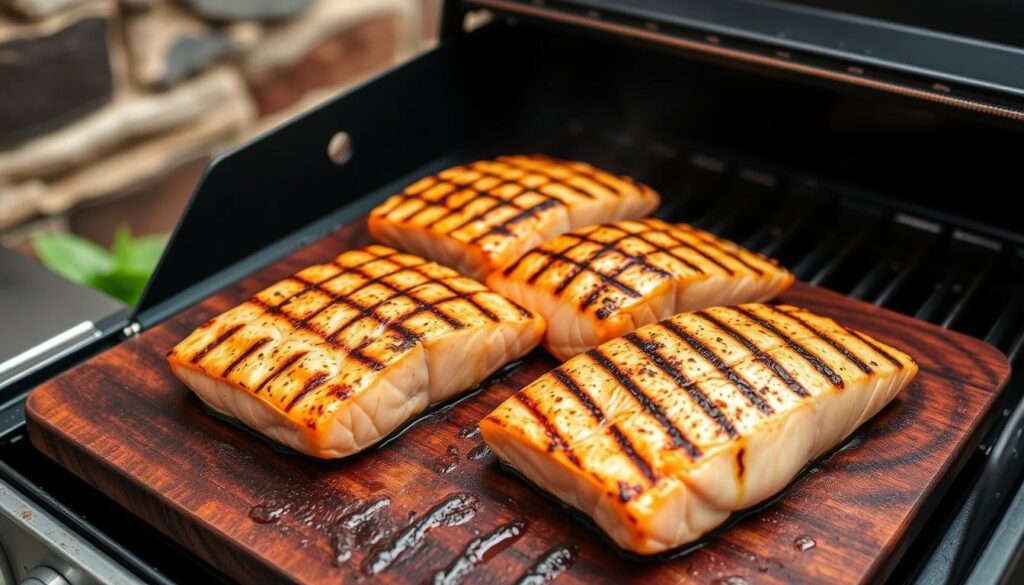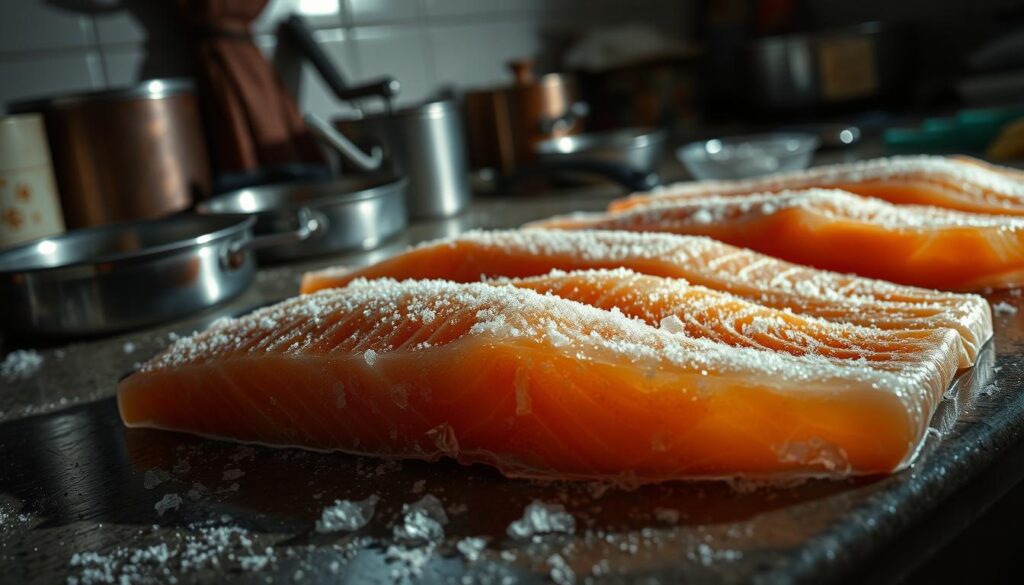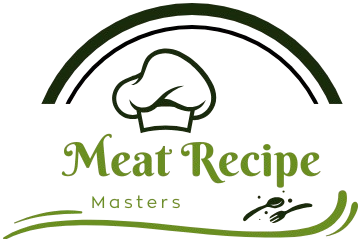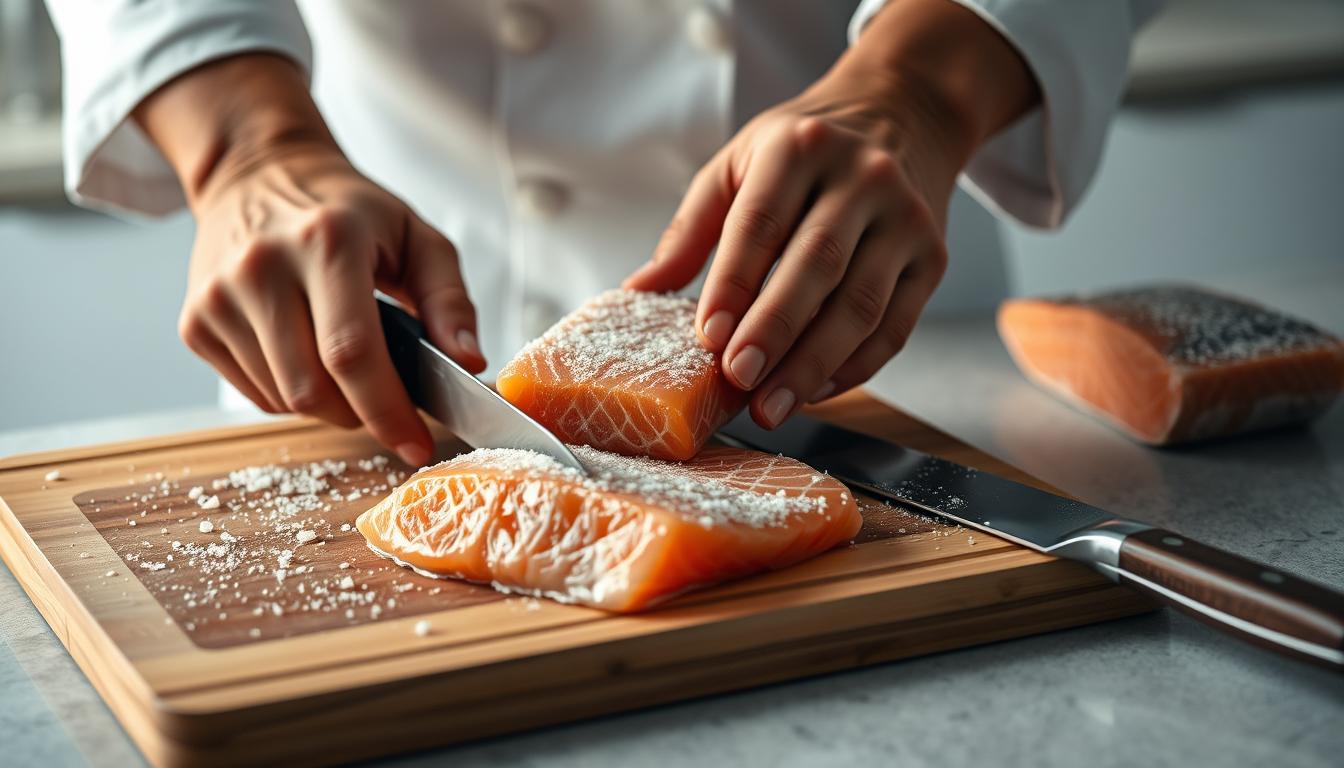How to Cook Frozen Salmon the Easy Way
Imagine coming home after a long day, wanting a healthy meal but too tired to cook. Cooking frozen salmon is your kitchen savior. It’s not just easy; it’s a game-changer for quick, tasty meals without losing quality.
Learning to cook frozen salmon changes how you make meals. Unlike fresh fish, frozen salmon is flexible and always ready. It’s perfect for busy people, home cooks, or anyone wanting to make meal planning easier.
Chefs and nutritionists often say to cook frozen salmon straight from the freezer. Freezing keeps the fish’s texture and nutrients intact. This makes it a top choice for quick, healthy meals.
Table of Contents
Benefits of Cooking Frozen Salmon
Cooking frozen salmon has amazing benefits that might surprise you. It turns a simple ingredient into a tasty meal with little effort.
Frozen salmon makes cooking easier and faster. Knowing these benefits helps you make better choices in the kitchen.
Time-Saving Convenience
Forget about thawing frozen salmon fillets. Cooking them straight from the freezer saves a lot of time. This is perfect for busy weeknights.
- No need to plan ahead for thawing
- Instant meal preparation
- Reduced kitchen prep time
Better Texture and Flavor
Cooking salmon from frozen can keep its optimal texture and moisture. Flash-freezing technology preserves the fish’s natural qualities. This results in a tender and flavorful dish.
Cost-Effective Meal Solution
Frozen salmon is a budget-friendly protein option. It’s cheaper to buy in bulk and lasts longer. This reduces food waste too.
| Benefit | Impact |
|---|---|
| Longer Storage | Stays fresh for months |
| Bulk Purchase | Lower per-pound cost |
| Reduced Waste | Less spoilage compared to fresh fish |
Understanding these benefits lets you turn frozen salmon into a smart, tasty meal choice.
How to Cook Frozen Salmon: Essential Methods
Cooking frozen salmon opens up a world of culinary possibilities. Whether you’re a busy home cook or a kitchen enthusiast, learning how to cook frozen salmon can transform your meal preparation. Different cooking methods offer unique advantages, allowing you to enjoy delicious salmon without the hassle of thawing.
When exploring frozen salmon recipes, you’ll discover several versatile cooking techniques that suit various kitchen setups and preferences. Here are the primary methods for preparing your frozen salmon:
- Oven Baking: A classic method for cooking frozen salmon in the oven that ensures even heating
- Air Frying: Quick and crispy technique for health-conscious cooks
- Pan-Searing: Creates a delightful golden crust
- Grilling: Adds smoky flavor and beautiful grill marks
- Instant Pot: Perfect for fast, tender results
Each method brings out different qualities in your salmon. The key is understanding how to cook frozen salmon properly to maintain moisture, flavor, and nutritional value. Your choice depends on available kitchen equipment, time constraints, and personal taste preferences.
The following sections will dive deeper into each cooking technique, providing step-by-step guidance to help you master the art of preparing frozen salmon with confidence and ease.
Air Fryer Frozen Salmon Technique
Cooking frozen salmon in an air fryer is a game-changer. It makes delicious meals quick and easy, without thawing. This method is perfect for a fast, healthy meal.
Temperature and Timing Guidelines
Temperature is key when cooking air fryer frozen salmon. Aim for 400°F to get a crispy outside and a juicy inside. Cooking times vary, from 7 to 9 minutes per side, based on the salmon’s thickness.
Seasoning Tips for Air Fryer Method
Seasoning frozen salmon needs a bit of finesse. Here are some tips to help seasonings stick:
- Lightly brush the frozen salmon with olive oil
- Sprinkle dry seasonings directly onto the oiled surface
- Use herb blends that adhere well to moisture
Step-by-Step Air Fryer Instructions
- Preheat your air fryer to 400°F
- Remove frozen salmon from packaging
- Pat salmon dry with paper towels
- Brush with olive oil
- Season generously
- Place in air fryer basket, skin side down
- Cook for 7-9 minutes per side
- Check internal temperature reaches 145°F
Air frying frozen salmon is a healthier way to cook. It keeps the salmon moist and adds a crispy outside. By following these steps, you’ll learn to cook frozen salmon easily and confidently.
Baking Frozen Salmon in the Oven
Cooking frozen salmon in the oven is a big win for busy cooks. It’s easy and quick, making a tasty, healthy meal in minutes. The secret to great oven-baked salmon is knowing the right techniques and cooking times.
To start, preheat your oven to 425°F to 450°F. This high heat makes the outside crispy and the inside tender. Cooking frozen salmon fillet takes about 13 to 17 minutes, depending on its thickness.
- Preheat oven to 425°F-450°F
- Place frozen salmon on a lined baking sheet
- Bake for 5 minutes to begin partial thawing
- Add your favorite seasonings
- Continue baking for 8-12 additional minutes
For even cooking, put your salmon fillets in a single layer on a baking sheet. Pro tip: Brush with olive oil and sprinkle with herbs like dill or parsley. This boosts the flavor.
To check if the salmon is done, use a fork to see if it flakes easily. Or, check the internal temperature. It’s ready when it reaches 145°F at its thickest point. This simple oven method makes a top-notch salmon dish in under 20 minutes.
Pan-Searing Frozen Salmon
Pan-searing frozen salmon is a quick and tasty way to cook. It turns your frozen fish into a meal fit for a restaurant in just minutes. It’s ideal for those who are short on time but want a healthy dinner.
To pan-sear frozen salmon, follow a few important steps. This method lets you cook the fish straight from the freezer. It saves time and keeps the fish moist.
Preparing Your Pan and Salmon
Choose a heavy-bottomed skillet for even heat. Rinse the frozen salmon under cold water and dry it well with paper towels. This is key for a crispy crust.
- Use a cast-iron or non-stick skillet
- Ensure salmon is completely dry before cooking
- Select medium-high heat for optimal searing
Flipping and Temperature Control
Managing the temperature is key to cooking frozen salmon well. Start by cooking the salmon skin-side up for 4-5 minutes. Then, flip it gently. Cook for another 7-10 minutes, until the inside reaches 145°F.
Achieving the Perfect Crust
To get a delicious crust, use a bit of oil like avocado or grapeseed. Don’t move the salmon while it’s cooking. This helps create a golden-brown crust that keeps the salmon’s flavors inside.
- Use high-heat oil
- Don’t overcrowd the pan
- Let salmon develop a golden crust before flipping
Grilling Techniques for Frozen Salmon

Grilling frozen salmon turns a simple meal into a tasty outdoor adventure. Learning to grill frozen salmon is quick and flavorful. It brings out the fish’s natural taste. The trick is knowing the right way to do it for the best results.
Begin by setting up your grill for both direct and indirect heat. Here’s how to grill frozen salmon:
- Preheat the grill to high heat (around 400-450°F)
- Clean and oil the grates to prevent sticking
- Pat the frozen salmon dry with paper towels
- Season with salt, pepper, and your favorite herbs
When it’s time to grill, put the salmon flesh side down first. Lower the heat to medium and cook for 6-7 minutes. This step creates nice grill marks and starts cooking evenly. Rotate the fish halfway to get those perfect crosshatch marks.
Flip the salmon carefully with a wide spatula. Cook the skin side for another 4-5 minutes. The total cooking time is about 10-12 minutes, depending on the salmon’s thickness. Look for signs like the fish becoming opaque and flaky.
Pro tip for grilling frozen salmon: Use a meat thermometer to check the internal temperature. Salmon is ready when it hits 145°F at its thickest part. This ensures it’s safe and tastes great.
Essential Tips for Perfect Frozen Salmon
Cooking frozen salmon can make your meals quick and tasty. Learning the right ways to cook it will make your dishes delicious. Whether you’re cooking at home or love trying new recipes, these tips will improve your seafood cooking.
Internal Temperature Guidelines
Getting the salmon just right is important. The USDA says to cook fish to 145°F for safety. Use a meat thermometer to check the temperature:
- Medium-rare: 125°F – Slightly translucent center
- Medium: 135°F – Pink and flaky texture
- Well-done: 145°F – Fully opaque throughout
Seasoning and Marinade Timing
Seasoning frozen salmon needs some care. Let it thaw a bit before adding marinades or rubs. This helps the flavors stick and get into the fish better.
Storage and Thawing Options
Keeping salmon fresh is important. You can store it in the freezer for up to two months. Here are ways to thaw it:
- Refrigerator thawing (recommended): Move salmon from freezer to refrigerator 24 hours before cooking
- Cold water method: Submerge sealed salmon in cold water for faster thawing
- Cook directly from frozen: Many recipes allow cooking salmon without complete thawing
Pro tip: Always check your salmon’s quality before cooking. Look for consistent color, no freezer burn, and a fresh ocean smell for the best results.
Common Mistakes to Avoid

Cooking frozen salmon can be tricky. Knowing common mistakes helps you cook it better. Many home cooks make errors that affect the fish’s quality and taste.
Temperature control is key when cooking frozen salmon. Cooking it too low can make it soggy and unappetizing. You want a crispy outside and a moist inside.
- Moisture Management: Always pat your salmon dry before cooking to prevent steaming instead of searing
- Avoid overcooking, which can make salmon tough and bland
- Use proper seasoning techniques to enhance flavor
Here are some critical mistakes to dodge when preparing frozen salmon:
| Mistake | Consequences | Solution |
|---|---|---|
| Not drying salmon | Soggy texture | Use paper towels to remove excess moisture |
| Low cooking temperature | Uneven cooking | Preheat pan or oven to recommended temperature |
| Overcooking | Dry, tough fish | Monitor internal temperature, cook until just done |
By avoiding these common errors, you’ll improve your salmon cooking skills. You’ll make delicious meals every time.
Conclusion
Cooking frozen salmon opens up a world of culinary possibilities. You can use air frying, baking, pan-searing, or grilling to make a frozen fillet into a tasty meal in minutes. This versatility lets home chefs make dishes as good as those in restaurants with little prep time.
Frozen salmon recipes are not just convenient. They let you enjoy high-quality protein with omega-3 fatty acids without daily grocery shopping. Learning to cook salmon from the freezer means you can make quick, healthy meals that wow family and friends.
Remember, practice makes perfect with these cooking methods. Start with simple seasonings and improve your technique over time. Each method adds unique flavors and textures to your salmon, so you’ll never get tired of it. With these tips, you’re ready to make frozen salmon into a tasty, healthy meal quickly.
Embrace the simplicity and creativity of frozen salmon recipes. Your kitchen is now ready to turn those frozen fillets into delicious, nutritious culinary masterpieces.
FAQ
Can I cook salmon directly from frozen without thawing?
What is the best temperature to cook frozen salmon?
How long does it take to cook frozen salmon?
Can I season frozen salmon before cooking?
Is frozen salmon as nutritious as fresh salmon?
What are the best seasonings for frozen salmon?
Can I use a marinade on frozen salmon?
How do I prevent my salmon from sticking to the pan or grill?
How can I tell when frozen salmon is fully cooked?
Is it safe to refreeze salmon after cooking?
There are no reviews yet. Be the first one to write one.

